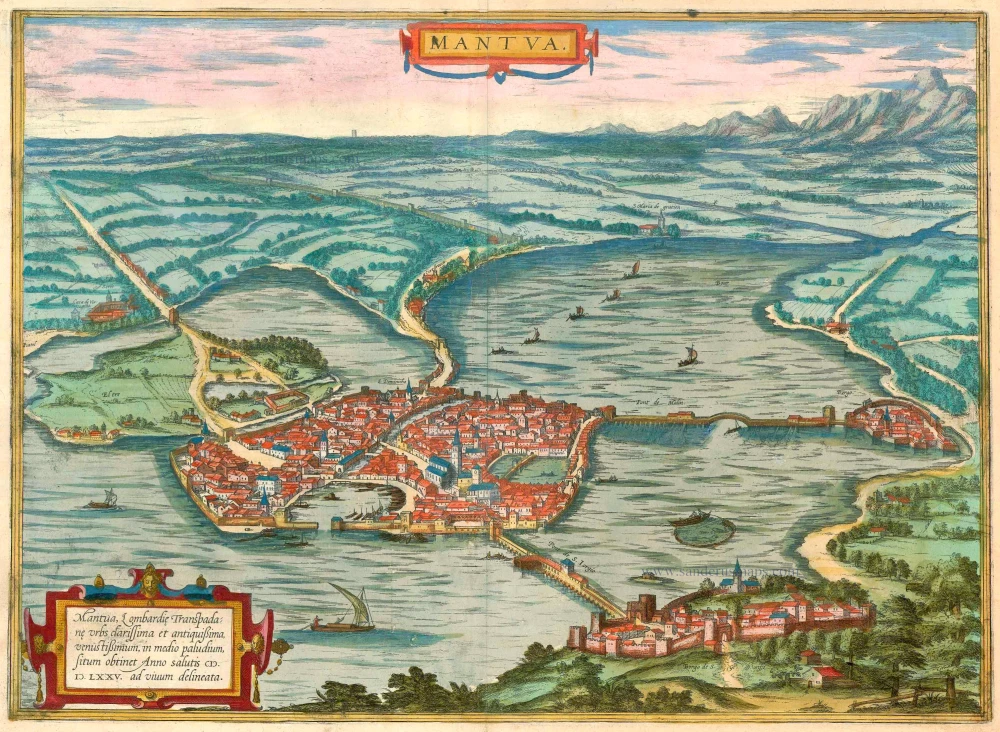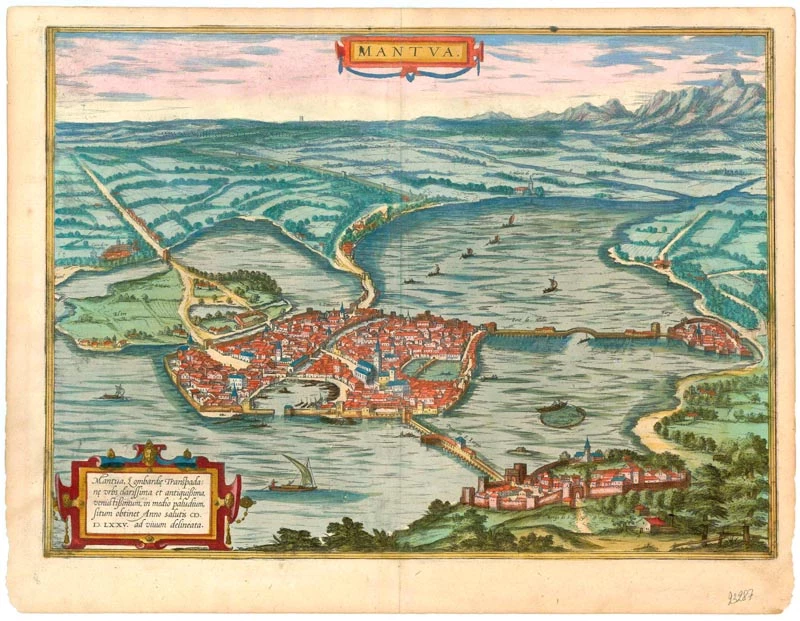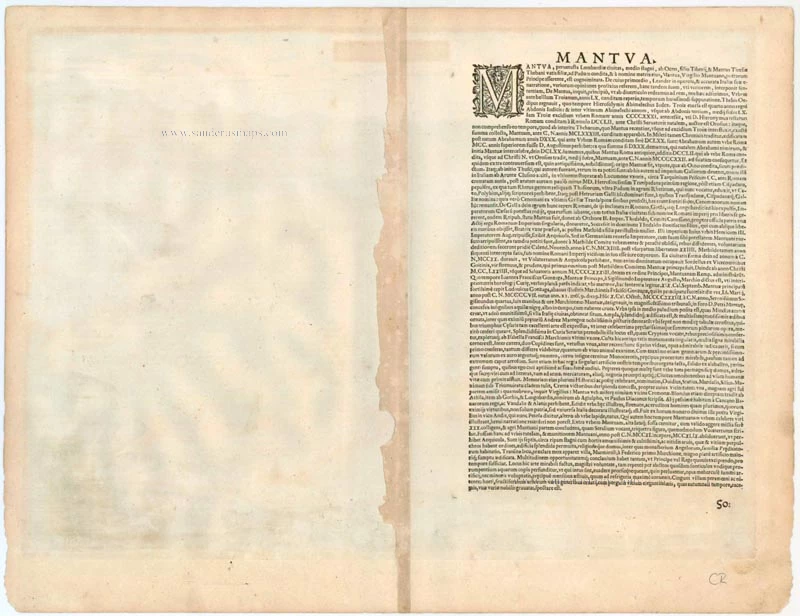Mantova by Braun & Hogenberg 1612
TRANSLATION OF CARTOUCHE TEXT: Mantua is a famous and ancient Lombardian city on the Po's far side, built in the middle of a marshland lake and drawn true to life in the year of our Lord 1575.
COMMENTARY BY BRAUN: "Mantua lies in the middle of a stagnant lake and is therefore very easy to defend. It is huge and has fine, beautiful houses, among which the house of Andrea Mantegna is not the worst, for it is decorated with all kinds of artistic pictures. There are seven painted plaques on which the emperor's triumph is painted in such a masterly and skilful fashion that it could easily be taken for a work by Apelles."
The engraving shows a bird's-eye view of a city in the middle of a lake. In the background, flat land can be seen, behind which appear the Alps. The city is linked to the mainland by bridges and dams. Mantua was founded by the Etruscans in the 6th century BC and named after Mantus, their god of the underworld. In Roman times, the city's most famous inhabitant, Virgil, was born here in 70 BC. After the end of the Roman era, Mantua had various rulers during the migration period. From 1328 to 1708, the Gonzaga family ruled Mantua. Their residence was the Palazzo Ducale, seen in the engraving directly to the right of the San Giorgio bridge (Pont de S. Iorgio). The Camera degli Sposi was decorated with frescos by Andrea Mantegna, one of the most important painters and engravers of the early Italian Renaissance. (Taschen)
Mantua, Lombardie, Transpadane Urbs clarissima et antiquissima, venustissimum, in medio paludium, ..
Item Number: 23287 Authenticity Guarantee
Category: Antique maps > Europe > Italy - Cities
Old, antique bird’s-eye view plan of Mantova by Braun & Hogenberg.
Title: Mantua, Lombardie, Transpadane Urbs clarissima et antiquissima, venustissimum, in medio paludium, ..
situm obtinet Anno salutis M.D.LXXV. ad vivum delineata.
Date of the first edition: 1575.
Date of this map: 1612.
Copper engraving, printed on paper.
Image size: 360 x 500mm (14.17 x 19.69 inches).
Sheet size: 410 x 540mm (16.14 x 21.26 inches).
Verso: Latin text.
Condition: Excellent, super old colour.
Condition Rating: A+.
From: Civitates Orbis Terrarum, ... Part 2. Köln, 1575-1612.
TRANSLATION OF CARTOUCHE TEXT: Mantua is a famous and ancient Lombardian city on the Po's far side, built in the middle of a marshland lake and drawn true to life in the year of our Lord 1575.
COMMENTARY BY BRAUN: "Mantua lies in the middle of a stagnant lake and is therefore very easy to defend. It is huge and has fine, beautiful houses, among which the house of Andrea Mantegna is not the worst, for it is decorated with all kinds of artistic pictures. There are seven painted plaques on which the emperor's triumph is painted in such a masterly and skilful fashion that it could easily be taken for a work by Apelles."
The engraving shows a bird's-eye view of a city in the middle of a lake. In the background, flat land can be seen, behind which appear the Alps. The city is linked to the mainland by bridges and dams. Mantua was founded by the Etruscans in the 6th century BC and named after Mantus, their god of the underworld. In Roman times, the city's most famous inhabitant, Virgil, was born here in 70 BC. After the end of the Roman era, Mantua had various rulers during the migration period. From 1328 to 1708, the Gonzaga family ruled Mantua. Their residence was the Palazzo Ducale, seen in the engraving directly to the right of the San Giorgio bridge (Pont de S. Iorgio). The Camera degli Sposi was decorated with frescos by Andrea Mantegna, one of the most important painters and engravers of the early Italian Renaissance. (Taschen)






